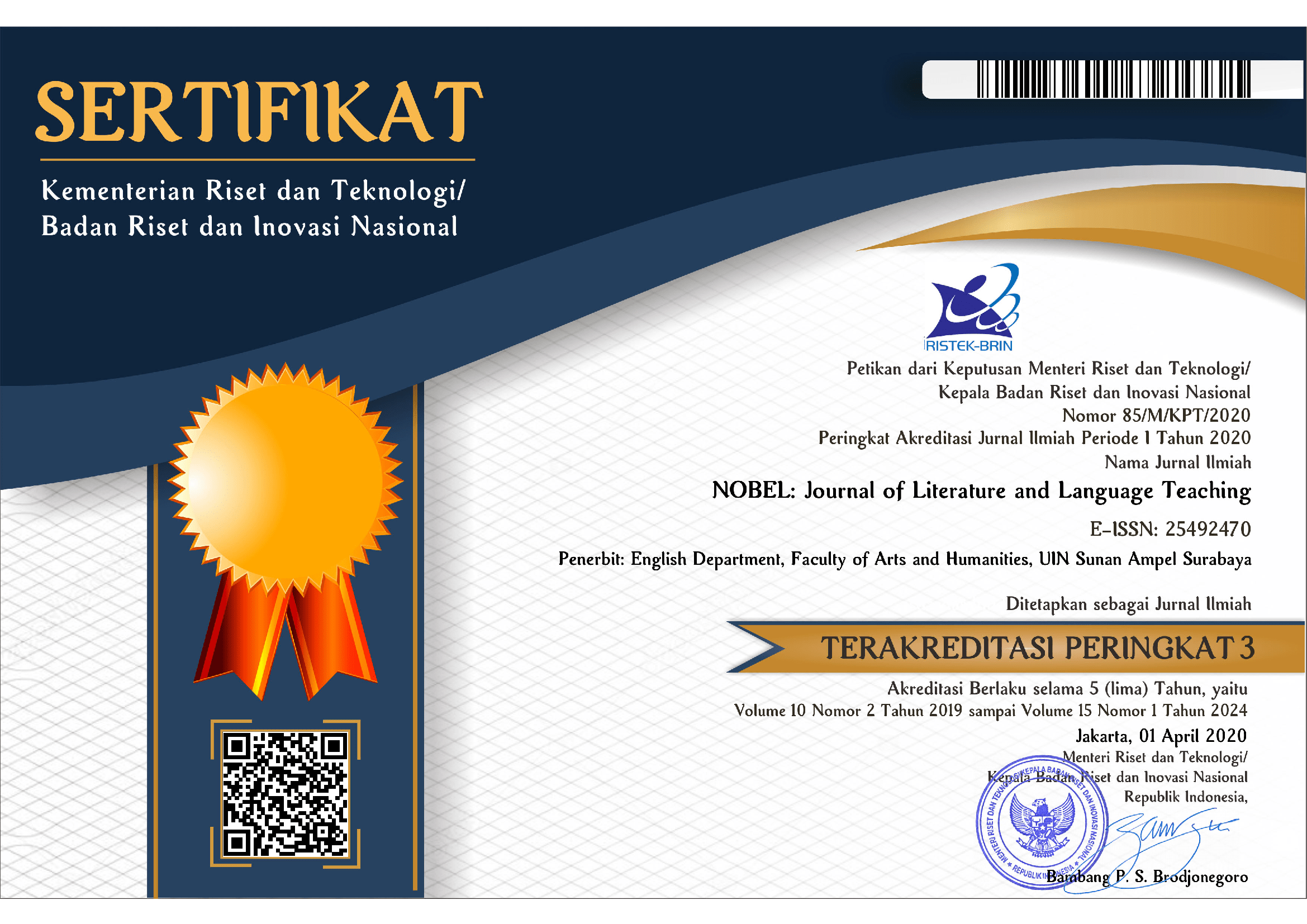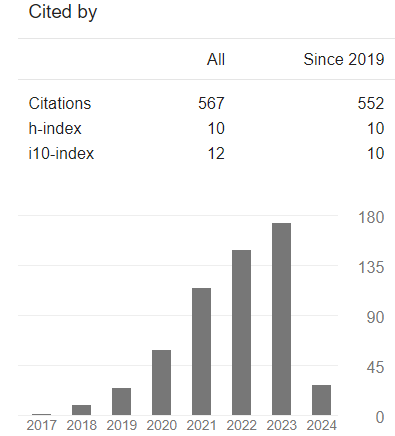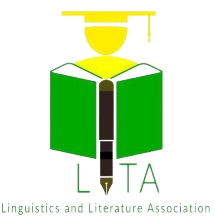Reasons behind Students' Silence to Teacher's Directive Utterances: A Case Study on A Lower Secondary School in Yogyakarta
DOI:
https://doi.org/10.15642/NOBEL.2022.13.2.254-270Keywords:
classroom interaction, directive utterances, reasons, students' responsesAbstract
Classroom interaction is identified to engage students in responding and interacting with teachers and other students. However, one problem that usually interferes with teacher-student interaction is unpredictable students’ reactions in interpreting the teacher’s utterances. The present research investigated several reasons for students’ responses to teachers’ directive utterances. To reach the objective, a case study was applied. Three eighth-grade students in a Yogyakarta lower secondary school were selected to participate in this study. The data were collected through observation and interviews. Meanwhile, the data analysis was based on Miles’ interactive model. The results of this study show that internal and external variables affect the students’ responses during English classes. A lack of vocabulary and needing extra time to guess are the internal variables to understanding the teacher’s intention. Meanwhile, unfavorable classroom atmospheres resulting from noisy students, noisy next-door classes, and noisy vehicles outside are the external variables that disturb the students’ attention and understanding of the teacher’s directive utterances. The results of this research reveal significant implications for students’ attitudes, as they rarely develop their interaction due to internal and external factors. Thus, the condition requires the teacher’s role as an active language user.
Downloads
References
Affandi, Y. (2016). Teacher’s display and referential questions. NOBEL: Journal of Literature and Language Teaching, 7(1), 65–77. https://doi.org/10.15642/NOBEL.2016.7.1.65-77
Alqahtani, M. (2015). The importance of vocabulary in language learning and how to be taught. International Journal of Teaching and Education, III(3), 21–34. https://doi.org/10.20472/TE.2015.3.3.002
Ambarwati, M. D. (2019). Students’ responses towards teacher talk. RETAIN, 7(3), 93–100. https://jurnalmahasiswa.unesa.ac.id/index.php/43/article/view/30477
Ary, D., Jacobs, L. C., Razavieh, A., & Sorensen, C. K. (2010). Introduction to research in education (8th ed.). Cengage Learning.
Austin, J. L. (1975). How to do thing with words (2nd ed.). Oxford University Press.
Bahing, Emzir, & Rafli, Z. (2018). English speech acts of illocutionary force in class interaction. Advances in Language and Literary Studies, 9(3), 113–120. https://doi.org/10.7575/aiac.alls.v.9n.3p.113
Baihaqi, A., Wilian, S., & Nuriadi, N. (2019). The influence of classroom learning environment toward students’ vocabulary acquisition: A study on second semester junior high school students. International Journal of Multicultural and Multireligious Understanding, 6(2), 710–719. https://doi.org/10.18415/ijmmu.v6i2.762
Basra, S. M., & Thoyyibah, L. (2017). A speech act analysis of teacher talk in an EFL classroom. International Journal of Education, 10(1), 73–81. https://doi.org/10.17509/ije.v10i1.6848
Bennett, J. (1975). Stimulus, response, meaning. In N. Rescher (Ed.), American Philosophical Quarterly Monograph Series 9 (pp. 55–88). Blackwell Publishing Ltd. https://www.earlymoderntexts.com/assets/jfb/srm.pdf
Bezemer, J. (2008). Displaying orientation in the classroom: Students’ multimodal responses to teacher instructions. Linguistics and Education, 19(2), 166–178. https://doi.org/10.1016/j.linged.2008.05.005
Bostrom, R. N. (1996). Memory, cognitive processing, and the process of “listening”: A reply to Thomas and Levine. Human Communication Research, 23(2), 298–305. https://doi.org/10.1111/j.1468-2958.1996.tb00396.x
Brown, H. D. (2007). Teaching by principles: An interactive approach to language pedagogy (2nd ed.). Pearson Education, Inc.
Celce-Murcia, M. (2000). Discourse and context in language teaching. Cambridge University Press.
Christianto, D. (2020). Speech acts in EFL classrooms. Journal of Pragmatics Research, 2(1), 68–79. https://doi.org/10.18326/jopr.v2i1.68-79
Guba, E. G. (1981). Criteria for assessing the trustworthiness of naturalistic inquiries. ECTJ, 29(2), 75–91. https://doi.org/10.1007/BF02766777
Hannah, R. (2013). The effect of classroom environment on student learning [Western Michigan University]. https://scholarworks.wmich.edu/honors_theses/2375/
Heriansyah, H. (2012). Speaking problems faced by the English department students of Syiah Kuala University. Lingua Didaktika, 6(1), 37–44. https://doi.org/10.24036/ld.v6i1.7398
Holmes, J. (2013). An introduction to sociolinguistics (4th ed.). Routledge. https://doi.org/10.2307/329116
Hussein, N. O., Albakri, I. S. M. A., & Seng, G. H. (2019). Pragmatic competence and activity-based language teaching: Importance of teaching communicative functions in Iraq EFL context. International Journal of English Literature and Social Sciences, 4(6), 1655–1660. https://doi.org/10.22161/ijels.46.5
Ingram, J., & Elliott, V. (2016). A critical analysis of the role of wait time in classroom interactions and the effects on student and teacher interactional behaviours. Cambridge Journal of Education, 46(1), 37–53. https://doi.org/10.1080/0305764X.2015.1009365
Khan, A., Khan, S., Zia-Ul-Islam, S., & Khan, M. (2017). Communication skills of a teacher and its role in the development of the students’ academic success. Journal of Education and Practice, 8(1), 18–21. https://files.eric.ed.gov/fulltext/EJ1131770.pdf
Koch, A. B. (2017). Sounds of education: Teacher role and use of voice in interactions with young children. International Journal of Early Childhood, 49(1), 57–72. https://doi.org/10.1007/s13158-017-0184-6
Kreidler, C. (2013). Introducing English semantics (2nd ed.). Routledge. https://doi.org/10.4324/9781315886428
McDuffie, A. (2013). Verbal communication. In F. R. Volkmar (Ed.), Encyclopedia of Autism Spectrum Disorders (p. 3240). Springer New York. https://doi.org/10.1007/978-1-4419-1698-3
Miles, M. B., Huberman, A. M., & Saldana, J. (2014). Qualitative data analysis (3rd ed.). Sage Publications, Inc.
Moskowitz, G. (1971). Interaction analysis-A new modern language for supervisors. Foreign Language Annals, 5(2), 211–221. https://doi.org/10.1111/j.1944-9720.1971.tb00682.x
Noor, N. M., Aman, I., Mustaffa, R., & Seong, T. K. (2010). Teacher’s verbal feedback on students’ response: A Malaysian ESL classroom discourse analysis. Procedia - Social and Behavioral Sciences, 7(2010), 398–405. https://doi.org/10.1016/j.sbspro.2010.10.054
Pease, A., & Pease, B. (2004). The definitive book of body language. Pease International.
Richmond, V. P., Wrench, J. S., & Gorham, J. (2020). Communication, affect & learning in the classroom (4th ed.). Creative Commons A-NC-SA License.
Santosa, A. W., Fauziati, E., & Supriyadi, S. (2021). Speech act analysis of teacher talk in EFL classroom. Proceedings International Conference on Education of Suryakancana (Iconnects) 2021, 230–237. https://doi.org/10.35194/cp.v0i0.1343
Sari, K. P. (2018). Teacher’s directive speech acts at kindergarten school. Vision: Journal for Language and Foreign Language Learning, 7(1), 34–44. https://doi.org/10.21580/vjv7i12735
Searle, J. R. (1969). Speech acts. Cambridge University Press. https://doi.org/10.1017/CBO9781139173438
Searle, J. R. (1981). Expression and meaning: Studies in the theory of speech acts. Cambridge University Pres.
Seffar, S. (2015). The effect of vocabulary knowledge on EFL oral competence. IOSR Journal of Research & Method in Education, 5(6), 8–13. https://doi.org/10.9790/7388-05610813
Singh, A. (2014). Conducive classroom environment in schools. International Journal of Science and Research, 3(1), 387–392. https://www.ijsr.net/get_abstract.php?paper_id=02013831
Songbatumis, A. M. (2017). Challenges in teaching English faced by English teachers at MTsN Taliwang, Indonesia. Journal of Foreign Languange Teaching and Learning, 2(2), 54–67. https://doi.org/10.18196/ftl.2223
Sudrajat, B. A. N., & Sinta, R. (2016). The Pattern of Teacher Instruction and Function of Student Responses in EFL Classroom. Creativity and Innovation Language Materials Development and Language Teaching Methodology in Asia and Beyond The 63rd TEFLIN International Conference, 274–284.
Suhirman, L. (2016). Speech acts in psycholinguistics class setting in postgraduate program. IJOLTL: Indonesian Journal of Language Teaching and Linguistics, 1(1), 19–36. https://doi.org/10.30957/ijoltl.v1i1.2
Sumilia, E., Puspita, H., & Elfrida, E. (2019). Students’ responses toward Teachers’ questions in senior high school 8 Bengkulu. Journal of Applied Linguistics and Literacy, 3(2), 108–121. https://doi.org/10.25157/JALL.V3I2.2538
Sundari, H. (2017). Classroom interaction in teaching English as foreign language at lower secondary schools in Indonesia. Advances in Language and Literary Studies, 8(6), 147–154. https://doi.org/10.7575/aiac.alls.v.8n.6p.147
Tri Budiasih, L. (2018). Illocution on speech acts of foreign students in Indonesian learning. PAROLE: Journal of Linguistics and Education, 6(2), 41–48. https://doi.org/10.14710/parole.v6i2.41-48
Waring, H. Z., & Hruska, B. L. (2012). Problematic directives in pedagogical interaction. Linguistics and Education, 23(3), 289–300. https://doi.org/10.1016/J.LINGED.2012.06.002
Yule, G. (1996). Pragmatics. Oxford University Press.
Downloads
Published
How to Cite
Issue
Section
License
Copyright (c) 2022 NOBEL: Journal of Literature and Language Teaching

This work is licensed under a Creative Commons Attribution 4.0 International License.







